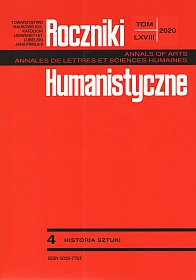Juan de Valdés Leal i jego „Hieroglify śmierci”
Juan de Valdés Leal and his “Hieroglyphs of Death”
Author(s): Andrzej WitkoSubject(s): Fine Arts / Performing Arts, Visual Arts, History of Art
Published by: Towarzystwo Naukowe KUL & Katolicki Uniwersytet Lubelski Jana Pawła II
Keywords: Juan de Valdés Leal; Spanish painting; 17th century; Baroque; Seville; Hieroglyphs of Death
Summary/Abstract: Juan de Valdés Leal (1622-1690) was one of the most original personalities of Seville painting, sometimes considered even the most Baroque of Spanish painters, an artist who created expressive works, showing tense figures, with nervous gestures and gloomy faces, often exceptionally ugly. He is thought to have been an apprentice at Antonio del Castillo’s studio in Córdoba from around 1644. His oldest works show naturalistic features with hard brush, lively colours and certain sharpness. They show the influence of Juan de Uceda, Francisco Varela, Francisco de Herrera the Elder, Antonio del Castillo and Francisco de Zurbarán. On the other hand, the expression of characters and the use of chiaroscuro evoke the works of José de Ribera. After 1655, his canvases indicate the evolution of the style towards greater dynamism, which was influenced by Francisco de Herrera the Younger. At that time, the artist’s brush became lighter, the colours more shiny and transparent. In 1659 he was appointed the city examiner of Seville painters, and a year later he was one of the founders of the Academy of Painting, of which he even became president. In 1664 he stayed at the royal court and became acquainted with the rich royal collections and established numerous contacts with other painters, including Francisco Rizi and Claudio Coello. In 1667 he became a member of the elite La Caridad brotherhood in Seville, for which he produced several works in 1672, including the famous “Hieroglyphs of Death” (In ictu oculi, Finis gloriae mundi), in which the artist incessantly fascinates the viewers with his vision that crosses the boundaries of life. He was also often undertaking activities other than easel painting, most often gilding reredos and making polychromes. He also created engravings, book illustrations and sculptures, which, however, have not been preserved.
Journal: Roczniki Humanistyczne
- Issue Year: 68/2020
- Issue No: 4
- Page Range: 7-38
- Page Count: 32
- Language: Polish

